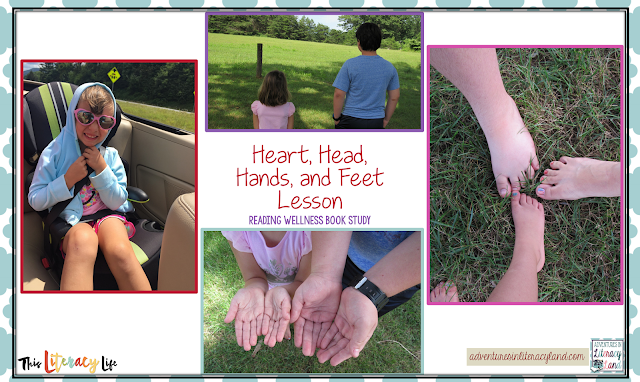Richard Allington and Anne McGill-Frazen end our Summer Reading book study with a chapter that sums up their findings from the different studies that were shared throughout the book. So I wanted to take a moment to review some of the important points that I gleamed from this book:
First of all, I think it was made very clear that the amount of voluntary summer reading that occurs by students from different socio-economic levels is the biggest factor to the achievement gap that we see in our schools. It was also noted that books are just not as available to kids in low income families when compared to middle class families. I work in a low socio-economic school and it is true. My kids repeatedly tell me..."I don't have books at home." So I work hard to get as many books in their hands as I can. What actually occurs in the homes of my students is out of my control, but what can I DO that positively impacts the practices in the home?
This leads me to the next part of this chapter: the ideas. Allington and McGill-Frazen summarize some of the positive practices that were shared throughout the book but they inserted a few more. I appreciated this because it got my brain thinking about what I could actually DO to impact some change. Here are a few of my favorite ideas:
*send books home over the summer
* open the school library 1 day a week
* students call in and read to the school voicemail
* meeting students at the local library to discuss books
I actually read part of this book as the year was wrapping up in May. When I read about how 15 books were given to each student by self-selection, I decided to try it out.
Here's what I did:
I filled my guided reading table with books at a specific DRA range. Called groups of students over and handed them a bag.
Each student filled their bag with 15 books that looked interesting to them. I repeated this process with the different DRA ranges. By the end, every first grader had a summer book bag filled with 15 books that they chose. There was one problem: these were not as "high interest" as I would have liked, but it was the best I could do with a last minute decision. I am excited to ask the students about their experiences with the summer book bags when school resumes.
The role of public libraries was also mentioned in this chapter but it was pointed out that they must read out to economically disadvantaged families because they are less likely to go to the library. I have found this to be true. The public library that my students visit does have a good reading program and offers many, many incentives for reading. But I am not convinced that the students that need to go there and check out books actually are. Then I read, "middle class children are more likely to be engaged in organized summer programs than children from low-income families."
What can I do to help change this? Can I help to start new habits within my school families?
These questions led to another decision that was made this summer. After a school-wide book study, it was decided that we would offer a "Readbox" twice a week at dismissal. We are a walking school; therefore, our lot is filled with families at dismissal time. This is a perfect opportunity to push reading at home and offer free books to be checked out. If parents are not going to go to the library, we will bring a version of a library to them.
My teammates and I have collected a rolling bookshelf (to roll outside) that will be painted red, a banner, a stamp for the books, books (as high interest as possible--notice the Disney characters!), and the Book Retriever app to check the books in and out.
So every week this year, my teammate and I will stand outside encouraging families to rent books from our "Readbox." My hope is that this will become routine for families. If this becomes the case, I would like to continue the routine during the summer months.
Has this book led you to want to make any changes in your school this upcoming year?
We would love to hear about them! Anytime someone shares an idea, it helps to stir more and more within the rest of us!! Thank you for reading along with us. It has been a helpful, insightful, and worthwhile read.
OTHER SUMMER READING BOOK STUDY POSTS:







































